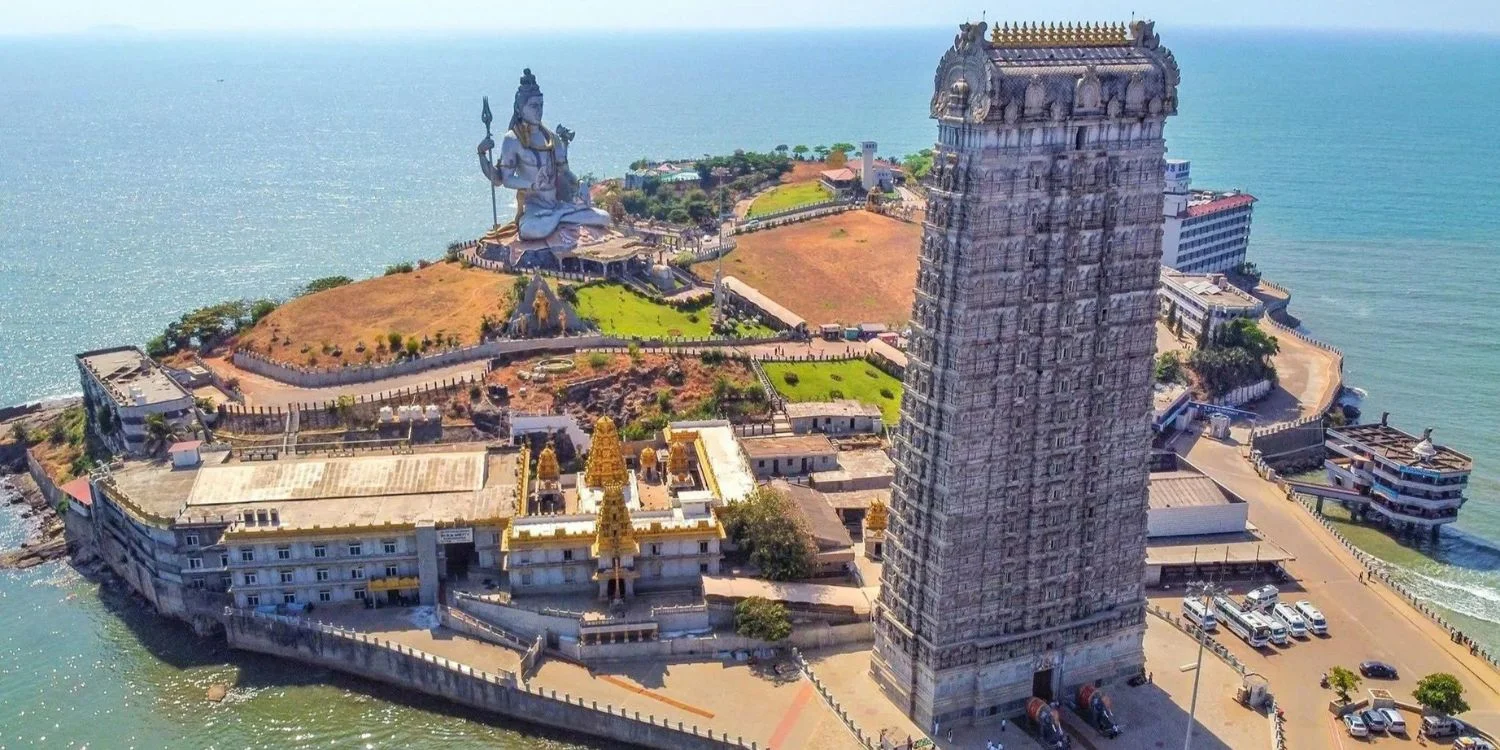SMALL NOTE ON ENVIRONMENTAL IMPACTS OF PORT INDUSTRY
Since the Indian port sector burgeons through an external trade boom, it becomes imperative to recognize the environmental impact it creates on the coast.
The maritime industry, now crucial to India’s economic strategy, is growing at an exceptional rate, but it’s creating severe environmental problems with economic pressures cutting across the sustainability of the environment. Though ports and shipping play a crucial role in the coastal development, they produce vast risks to the marine environment and the coastal communities.
Building ports triggers major environmental damages, such as habitat destruction, water, air light & sound pollution, strong disruption of coastal ecosystems, impacting biodiversity and local communities.
If indeed, “Sustainable development is a development that meets the need of the present without compromising the ability of future generations to meet their own need.” (World Commission on Environment and Development, 1987, p. 8), it must integrate its three key elements into all dimensions of decision-making – environment, economy, and society, with primacy to the first one.
The effective engagement and integrated coordination of all stakeholders, especially the coastal communities, is crucial for the sustainable development of ports. The ignorance of coastal ecology affected by port development, of threats to the coastal communities and to the marine environment, is triggering broad impacts to the coastal habitats and biodiversity, with multiple side adverse effects (e.g., oil pollution, air emissions, ballast water transfer of harmful aquatic organism from one region to another, etc.).
The anthropogenic threats caused by them (such as habitat destruction, biodiversity loss, invasive species, etc.) are countless and extremely harmful to the coastal and marine ecosystem, requiring a need for continuous compliance and monitoring of environmental rules.
The Coastal Regulation Zone Notification aims the protection and conservation of the coastal region, its critical environment and marine biodiversity, along the protection of the coastal communities. However, though rules and regulations are in place, their compliance and enforcement are a huge challenge often dismissing the rank of environmental and societal values in favour of the industrial ones, and thus, the Government tools (EIA and CRZ) to achieve the sustainable development of ports, are failing.
For a fitted perfect balance between industrial growth and environmental conservation, overpassing the critical loopholes of implementation and enforcement processes, an improved monitoring system, enforcement procedures, and industry accountability are a must.
- HABITAT DESTRUCTION & BIODIVERSITY LOSS
Port and shipping lane constructions and expansions cause massive vital habitat destruction
a) Coastal Ecosystems – Port construction destroys the extremely sensitive coastal habitats such as mangroves and coral reefs, vital for biodiversity and coastal protection
b) Dredging – deepening channels for larger vessels increases sedimentation, blocks sunlight and disrupts the photosynthetic activities of marine fauna and flora
c) Loss of Natural Barriers – Destruction of natural habitats reduces the ability of coastal areas to withstand storm floods and coastal erosion, triggered by the construction of port breakwaters.
d) Mangrove Loss – deploy of seaports, jetties, seaplanes and other coastal intrusions impact mangrove cover, leading to a loss of benthic biodiversity and reduced microbial decomposition rates
- WATER POLLUTION
Mostly water pollution, such as ship repair, cargo handling, storage and dredging, storm water and car park runoff, water stagnation, eutrophication and anoxia risks are due to weak water turnover, dry dock operations, dredging and water thermal pollution.
a) Oil Spills and Leaks – Port operations, such as fuel storage and tanker operations, commonly cause accidental oil spills and leaks, contaminating water and soil; they are disastrous occurrences drastically affecting marine biodiversity and jeopardising not only the local fishing industries as the livelihood of coastal communities.
b) Discharge of Effluents – Industrial and port activities frequently discharge untreated or poorly treated effluents into waterways, polluting water and harming aquatic life
c) Ballast Water Discharges /Transfer – introduce harmful aquatic organisms (viruses and bacteria) from one region to another, impacting local ecosystems that multiply into pest proportions by outliving the native species, spreading risky infections, and environmental consequences that are quite irreversible.
d) Dredging – required for port deepening and navigational channels, its excavation, leads to countless adverse impacts on the marine and coastal environment, changing currents and waves, increasing coastal erosion, resuspending pollutants and sediment and damages water quality. It blocks light penetration interferes with the photosynthetic activities of marine flora. Habitat destruction not only decreases biodiversity as decreases the natural barriers preventing storm surges and erosion
- AIR POLLUTION
Air pollution has become a chronic national crisis affecting the lives of millions of people in the country, violating their fundamental rights (14, 19 &21) of Constitution.
The maritime industry is among the worst contributors to air pollution due to its harmful health upshots and environmental deterioration, as ships emit pollutants using heavy fuel oil, emitting SOx, NOx. While SOx increases acid rain and triggers respiratory diseases in coastal communities, NOx emissions produce ground-level ozone declining air quality and peoples’ health
a) Ship Emissions – Ships using bunker fuel release significant amounts of air pollutants (e.g., carbon dioxide, nitrogen oxides, sulfur oxides, etc)
b) Port Equipment Emissions – Port equipment, vehicles, and marine vessels highly contribute to air pollution by their burning of diesel
c) Dust Pollution – Handling of bulk cargo usually creates dust clouds, impacting air quality in the area
d) Air Toxics – Port manoeuvres release various air toxics, posing serious health risks to nearby communities.
- NOISE POLLUTION
Ports and their related traffic produce a large amount of noise pollution from road and rail vehicle movements, goods movement (from machinery such as quay-cranes, pumps, etc.), from the ships themselves such as main and auxiliary engines, heating and ventilation units, construction, industrial activity within the port, etc.
Noise transmission can be through air or water, creating a wide range of consequences for nearby residents, such as sleep nuisance and stress, leading to an increased risk of cardio-vascular disease for humans.
The significant underwater noise made by ship engines, propulsion machinery, and cargo operations disrupts aquatic organisms, such as cetaceans’ navigation and the marine mammals’ communication driving to the decline of their populations and disruption of their social structures.
5. ADDITIONAL ENVIRONMENTAL IMPACTS
a) Soil Pollution – Oil spills, bulk handling operations, and vehicle traffic contaminate soil in and surround areas where elevated levels of pollutants such as heavy metals are found. The large areas of covered surfaces increase run-off and accelerate soil erosion, interfering with sediment transport, modifying the coastline and increasing coastal erosion.
b) Disruption of Coastal Currents and Littoral Drifts – Port construction ends up altering wave refraction, diffraction, and reflection, leading to changes in current patterns and littoral drifts, increasing erosion or accretion in shoreline.
c) Oil pollution affects the fisheries in the sea and livelihood of small-scale fishermen
d) Light pollution strongly effects human health impacting sleeping patterns, as well as disrupts wildlife, especially nocturnal animals, even leading to deaths in bird populations.
e) Waste pollution – large quantities and varieties of waste are produced depending on the type of vessels served – waste water, plastic, oily & toxic sludges, discarded fishing items, etc.. Cruise ships in particular produce large amounts of food- and cabin-related waste,
RESUME
Ports generate massive pollution in all aspects from emissions to air, discharges in water, soil and marine sediment, noise, waste generation and improper disposal, as well as destruction of local marine habitats.
Ecological impacts of degradation of habitats and biodiversity parallelize socio-economic impacts on the coastal communities.
Major ways of marine pollution are generated by oily water discharge from ships, tanker accidents, solid wastes, anti-fouling paints exhaust from marine machinery, discharge of ballast water, accidental spillage. The devastating effects of these spills are often too large and difficult to assess, impacting further up in the marine food chain, causing a decline in the local fishing industry. The available seafood has already high levels of toxic metal residues, making it ill-suited for public consumption.
Apart from oil spills, sewage and wastewater (coming from medical rooms, kitchens and toilets, containing bacteria, viruses, etc.), terminal activities are one source of the environmental impact of seaports which can be summarized in several categories, namely:
The environmental sustainability of port infrastructure projects and operations has become a factor that strongly contends with economic and financial viability, and thus, the “greening” of ports is attracting emergent attention after the green port concept was proposed at the 2009 United Nations Climate Change conference. However, still the greening of ports in India remains a promotional marketing, a so-called Greenwashing.


